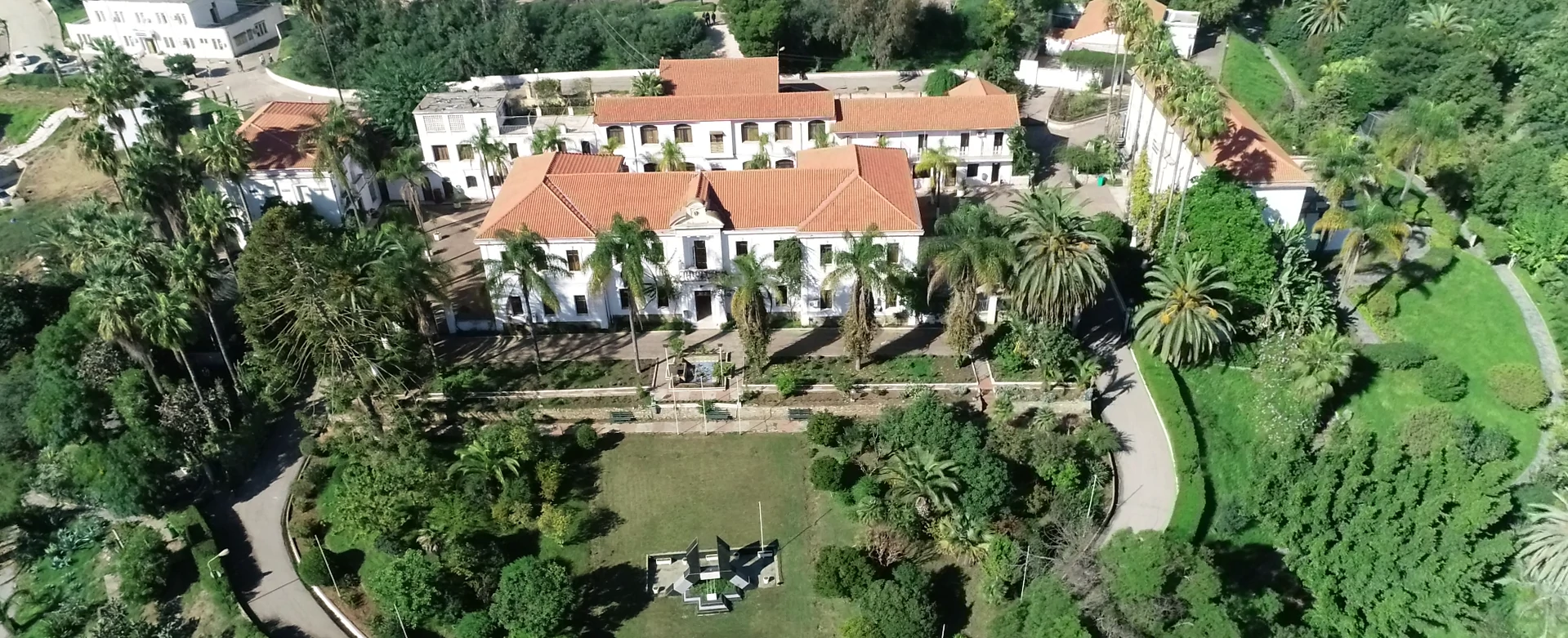DSpace Université de Skikda
Dépôt numérique de l'université de skikda

Communities in DSpace
Select a community to browse its collections.
Recent Submissions
Analyses polliniques et étude physico-chimique de quelque types de miel sur la wilaya Skikda
(Faculté des Sciences, 2026) GATTAL , Dalila; KETFI , Chahrazad; Zalani , Karima
Ce mémoire s’inscrit dans une démarche de valorisation des miels produits dans la wilaya de Skikda, région réputée pour sa biodiversité floristique et son potentiel apicole. À travers une double approche analytique – physicochimique et pollinique – l’étude vise à caractériser scientifiquement la qualité et la diversité florale de ces miels.
L’introduction générale met en lumière l’importance du miel en tant que produit naturel à haute valeur nutritionnelle, médicinale et économique. Elle souligne également le rôle stratégique croissant de la wilaya de Skikda dans la production apicole nationale, avec une récolte atteignant plus de 530 000 kg en 2024.
Les analyses physicochimiques ont révélé des teneurs en eau, en sucres, en pH et en acidité largement conformes aux normes internationales (Codex CXS 12-1981), attestant de la bonne qualité des produits. L’analyse organoleptique a confirmé la diversité sensorielle des échantillons, tandis que l’analyse pollinique a mis en évidence la présence de plusieurs familles florales, classant tous les miels comme polyfloraux.
Les résultats obtenus soulignent non seulement la richesse florale et la bonne qualité globale des miels de Skikda, mais aussi l’importance de leur reconnaissance scientifique pour une meilleure valorisation commerciale. Ce travail ouvre ainsi la voie à des perspectives de certification, de labellisation et de développement durable du secteur apicole régional
Modélisation des effets explosifs et estimation de risque au niveau RA1K Skikda
(Université 20 août 1955 -SKIKDA: Faculté de Technologie (Département de Génie Des procédés), 2023-06-23) Nabil Benassloun, Hilal Zerzar, Ameur Bouchareb Enc: . Bouafia Abdrraouf, Bougofa Mohammed
La gestion des risques dans les unités de production est d'une grande importance pour
l'organisation de travail, par voie de conséquence la sécurité est nécessaire pour assurer la
fonction donnée de l'installation.
L'HAZOP est un outil particulièrement efficace pour les systèmes analyse des risques, cette
méthode permet d'améliorer le niveau de sécurité des unités neuves ou existantes. L'approche
d'une sécurité optimale par cette méthode, garantira une maitrise des risques probables. Les
stratégies mises au point peuvent s'appliquer avantageusement dans tous les secteurs
industriels de même activité.
Les raffineries de pétrole présentent un risque élevé, à cet effet, nous avons modélisé les effets
des différent phénomènes dangereux à l'aide de l'outil de simulation SAFETI sur l'unité de
raffinage du pétrole 100 à Skikda pour voir les effets des pressions et des effets thermiques et
interpréter les résultats.
Analyse du cycle de vie et quantification des impacts environnementaux du procécé de liquification du gaz naturel a laide du logiciel simapro mega train GL1K skikda
(UNIVERSITÉ 20 AOÛT 1955 SKIKDA: FACULTE DE TECHNOLOGIE (DÉPARTEMENT DE GÉNIE DES PROCÉDÉS), 2023-06-23) CHAOUCHE Ameur, KHELIL Mohamed islem, BOULAHDID Abd elmoumen ENC: Benaïssa Amina
Dans le but d'adopter une approche plus durable sur le plan environnemental, de nombreuses
entreprises sont ouvertes à des démarches telles que l'analyse du cycle de vie. L'objectif
principal de ce travail est d'effectuer une analyse du cycle de vie du processus de
décarbonatation du gaz nature au niveau du complexe GL1K Skikda. Pour atteindre notre
objective, il est nécessaire d'identifier tous les flux entrants et sortants intermédiaires dans le
processus, ce qui constitue l'inventaire du cycle de vie. Afin de quantifier les impacts et
risques environnementaux, nous avons procédé à une modélisation par le logiciel Sima-Pro et
cela avec les méthodes suivantes : IMPACT 2002+, ReCiPe Endpoint, Eco-indicator 99 et
TRACI 2. Selon les résultats obtenus, il a été constaté que l'étape de l'activité d'absorption est
responsable de 99.7% des impacts environnementaux. Les trois catégories d'impacts les plus
touchées sont la pénurie des ressources avec 77.7 %, la santé humaine avec 21.6% et
l'écosystème avec 0.739%.
Analyse des risques liés à l’exploitation du bac de stockage d’éxène par la méthode HAZOP au niveau de CP2K
(UNIVERSITE DE 20 AOUT 1955 SKIKDA: FACULTE DE TECHNOLOGIE (DEPARTEMENT DE GENIE DES PROCEDES), 2023-06-23) Saouli Mouafak, Hmeioud Sohaib Abd El Hamide: Enc: GUERFI Samia
Analyse et évaluation des risques liés au bac de stockage du toluène par la méthode HAZOP et simulation des effets du scénario majeur par le logiciel ALOHA
(UNIVERSITÉ 20 AOÛT 1955 SKIKDA: FACULTE DE TECHNOLOGIE (DÉPARTEMENT DE GÉNIE DES PROCÉDÉS), 2023-06-25) Anis boumaza, Chemse Eddine Lamri, Taher boulahdid ENC: Hallaci Ibtissem
L’objectif principal de ce travail est l’utilisation de la méthode HAZOP pour l’analyse des risques
liés au stockage de toluène qui représente un secteur stratégique dans l’industrie pétrolière, et
logiciel de simulation ALOHA permet de modéliser les émissions de produits chimiques, leur
dispersion atmosphérique et d'estimer les conséquences potentielles sur les populations et
l'environnement.
Cette étude nous a permis de déceler les déférents risques et proposer des recommandations pour
minimiser et maitriser les risques existants.